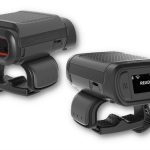In the logistics world, it’s easy to assume that innovation happens in the cloud. Inventory dashboards, shipment tracking tools, predictive analytics—these are the usual suspects when people talk about supply chain technology. But walk through a warehouse today and you may notice something quieter. A new layer of intelligence is taking hold, and it’s mounted just above the racks, beside the docks, or near the staging lanes.
Vision AI is starting to change how warehouses operate. Not by replacing workers or reshuffling teams, but by acting as an extra set of eyes. A set that never blinks, forgets, or misplaces a log sheet.
Over the past year, a growing number of logistics companies have begun embedding visual intelligence tools into their operations. Lumenalta’s recent survey of 920 logistics professionals highlights a clear trend: organizations that are applying vision AI in targeted ways are beginning to see measurable results. Real-time tracking. Fewer disputes. Faster decisions. And most importantly, a growing level of operational confidence.
The technology works by capturing video from cameras stationed around the facility. That video is then processed by AI models trained to recognize specific events—pallet movements, package conditions, human activity, and even safety compliance. The result isn’t just passive footage. It’s structured, searchable information that can support decisions, trigger alerts, and provide evidence.
And the best part? It doesn’t require a full digital overhaul.
One distribution center featured in the report saved over $600,000 per year by simply placing cameras at key vehicle transfer points. By capturing the condition of goods at every hand-off, they cut damage disputes nearly in half. What used to take days to resolve now takes minutes. The company didn’t need a massive IT team to make it work. Instead, they partnered with experts who understood both the technology and the operational environment.
That approach—pairing AI with hands-on logistics expertise—is where the shift is really happening. Lumenalta found that the organizations seeing the fastest returns weren’t those with the biggest budgets. They were the ones that chose the right implementation path. Start small. Target a known issue. Scale what works.
For example, one firm began using vision AI in a high-traffic loading zone known for misplaced shipments. Within weeks, the company had clear data on what was happening and where the breakdowns were occurring. They used that insight to reconfigure staffing during peak hours, tweak workflows, and reduce loading errors.
The benefits extended beyond logistics. The internal conversation around AI changed. What was once seen as abstract or risky suddenly felt tangible. Employees saw it solving a real problem. That built momentum.
Still, many companies remain hesitant. According to the same survey, 87 percent of logistics leaders said their internal teams lack the skills to manage AI projects independently. That gap matters. It’s one reason so many pilots stall after the first phase.
But that’s also where partnerships come into play. Lumenalta’s implementation model focuses on aligning vision AI solutions with business processes, not just technical specs. This allows companies to avoid trial-and-error experimentation and instead focus on results from day one.
It also allows for flexibility. Vision AI can be deployed in different ways, depending on the facility layout, the nature of the goods, or the regulatory environment. For one company, the priority might be damage prevention. For another, it could be tracking high-value items or monitoring compliance at cold storage units.
Across all these applications, the thread is the same. Vision AI brings visibility to the places where gaps exist. Not theoretical gaps. Real ones. Gaps where inventory slips through unscanned, where packages are loaded incorrectly, or where time is wasted rechecking work that was done right the first time.
And those gaps are expensive. Missed delivery windows, product shrinkage, and regulatory non-compliance all carry a cost. Not just in money, but in time, reputation, and lost opportunities.
What’s different now is that companies don’t have to guess. They can see.
According to the survey, 47 percent of vision AI users reported faster decision-making. That’s a direct result of having access to trustworthy, real-time data. Not dashboards built on lagging indicators, but actual footage and AI-driven event tags that show what’s happening as it happens.
It’s also worth noting that vision AI is proving to be a catalyst for broader modernization. Once companies start working with real-time visual intelligence, they begin rethinking their data models. They look for new connections between physical events and digital systems. Many of the most advanced use cases involve integrating vision insights into WMS or ERP platforms, giving operations teams a live window into warehouse activity without needing to leave their office.
There’s a deeper shift underway here. Visibility is no longer something that lives at the executive level or on a reporting dashboard. It’s becoming operational. And it’s being built from the ground up.
For warehouse leaders looking to improve efficiency without introducing massive change, the takeaway is simple. Identify a known pain point. Deploy a small-scale vision AI solution. See what it captures. Use that insight to improve the process. Then build from there.
Companies that follow this path are gaining an advantage. Not because they’re experimenting more, but because they’re applying the right tools in the right places. And they’re doing it in weeks, not quarters.
Lumenalta’s research makes the case clearly. Vision AI isn’t a future technology. It’s already reshaping the warehouse floor, one camera at a time.







